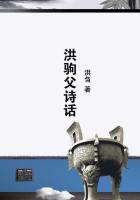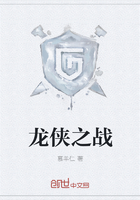Finally, we have seen that natural selection, which results from the struggle for existence, and which almost inevitably induces extinction and divergence of character in the many descendants from one dominant parent-species, explains that great and universal feature in the affinities of all organic beings, namely, their subordination in group under group. We use the element of descent in classing the individuals of both ***es and of all ages, although having few characters in common, under one species; we use descent in classing acknowledged varieties, however different they may be from their parent;and I believe this element of descent is the hidden bond of connexion which naturalists have sought under the term of the Natural System. On this idea of the natural system being, in so far as it has been perfected, genealogical in its arrangement, with the grades of difference between the descendants from a common parent, expressed by the terms genera, families, orders, &c., we can understand the rules which we are compelled to follow in our classification. We can understand why we value certain resemblances far more than others; why we are permitted to use rudimentary and useless organs, or others of trifling physiological importance; why, in comparing one group with a distinct group, we summarily reject analogical or adaptive characters, and yet use these same characters within the limits of the same group. We can clearly see how it is that all living and extinct forms can be grouped together in one great system; and how the several members of each class are connected together by the most complex and radiating lines of affinities. We shall never, probably, disentangle the inextricable web of affinities between the members of any one class; but when we have a distinct object in view, and do not look to some unknown plan of creation, we may hope to make sure but slow progress. Morphology We have seen that the members of the same class, independently of their habits of life, resemble each other in the general plan of their organisation.
This resemblance is often expressed by the term `unity of type;' or by saying that the several parts and organs in the different species of the class are homologous. The whole subject is included under the general name of Morphology. This is the most interesting department of natural history, and may be said to be its very soul. What can be more curious than that the hand of a man, formed for grasping, that of a mole for digging, the leg of the horse, the paddle of the porpoise, and the wing of the bat, should all be constructed on the same pattern, and should include the same bones, in the same relative positions? Geoffroy St Hilaire has insisted strongly on the high importance of relative connexion in homologous organs:
the parts may change to almost any extent in form and size, and yet they always remain connected together in the same order. We never find, for instance, the bones of the arm and forearm, or of the thigh and leg, transposed.
Hence the same names can be given to the homologous bones in widely different animals. We see the same great law in the construction of the mouths of insects: what can be more different than the immensely long spiral proboscis of a sphinx-moth, the curious folded one of a bee or bug, and the great jaws of a beetle? yet all these organs, serving for such different purposes, are formed by infinitely numerous modifications of an upper lip, mandibles, and two pairs of maxillae. Analogous laws govern the construction of the mouths and limbs of crustaceans. So it is with the flowers of plants.
Nothing can be more hopeless than to attempt to explain this similarity of pattern in members of the same class, by utility or by the doctrine of final causes. The hopelessness of the attempt has been expressly admitted by Owen in his most interesting work on the `Nature of Limbs.' On the ordinary view of the independent creation of each being, we can only say that so it is; that it has so pleased the Creator to construct each animal and plant.















